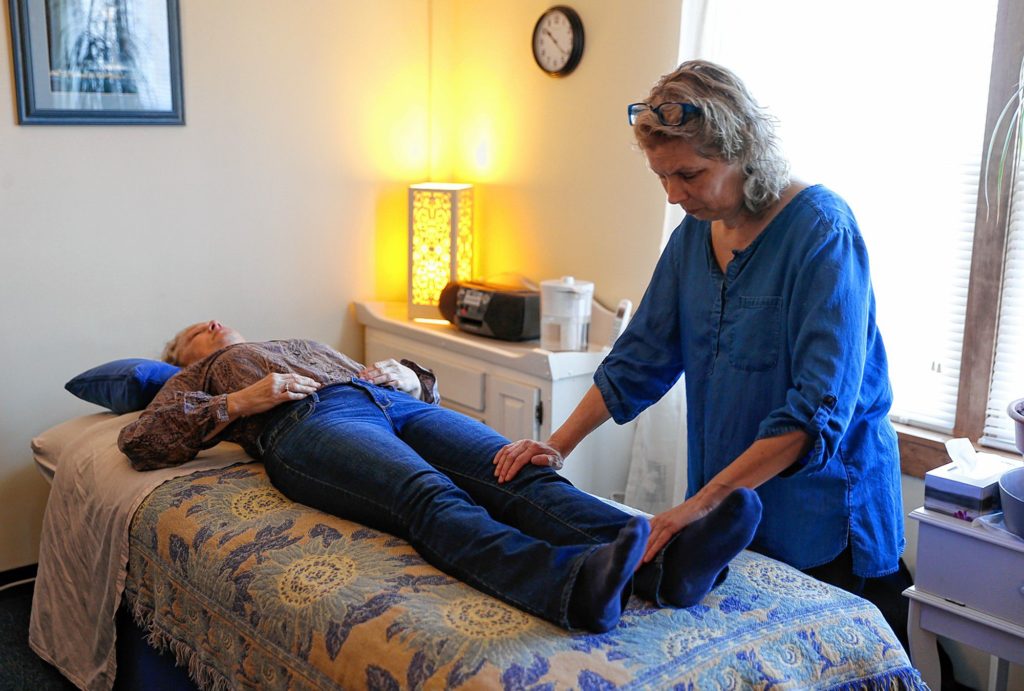Every year billions of ticks creep through wooded areas across Massachusetts and New England, feeding vampirically off the blood of wildlife, pets, and humans. With ticks comes the most obvious fear: Lyme disease. But how much of what seems like common knowledge about ticks is really true? Do cold winters or mild winters affect tick populations? Is it really the smallest ticks that carry diseases most of time?
“They’re always abundant, generally speaking. The threats are real,” Stephen Rich, a professor of microbiology at UMass Amherst and the director of the Laboratory of Medical Zoology, said. “You can get bitten by a tick anywhere in the state of Massachusetts — virtually every 351 towns in the state have ticks.”
“The number of ticks are no more or less on average across all those sites this year than they were last year,” Rich added.
The Laboratory of Medical Zoology at UMass Amherst analyses ticks for diseases by looking for the ribonucleic acid (RNA) of seven different pathogens associated with the arachnid, he said.
“We look for the RNA that’s associated with the pathogen. The beauty is that DNA is very stable, and we can detect very, very minute quantities of it because our method uses an amplification procedure that takes tiny numbers of molecules and amplifies them up. so we can detect them more easily,” Rich said. “This is the same kind of method that is used for pulling DNA out of woolly mammoths that are 10,000 years old.”.
Developing vaccines for tick-borne diseases is one of the primary missions for the laboratory, which started its research in 1992. Since 2006, the lab has also provided the public service of analyzing ticks submitted by people who’ve been hosts to the ectoparasite to learn about how long the tick has fed, its species, and whether it carries any diseases.
Ticks, in their larval form, are generally immune to heat or cold, Rich said, debunking the myth that a mild winter would lead to greater numbers of ticks.
Another myth is that smaller ticks are associated with Lyme disease — “You can’t go purely on size, because there are some ticks that are associated with a disease that are pretty big and then there are some that are really small that aren’t associated with disease,” Rich said.
Adult deer ticks are prevalent in early spring as the winter snows melt and the ground begins to dry out, he said. About half of all adult deer ticks are infected with a pathogen that causes Lyme disease, and about 2 to 5 percent of them also carry anaplasmosis, which causes a fever, severe headaches, muscle aches, chills and shaking as well as less frequent symptoms such as weight loss, aching joints, diarrhea, and a change in mental status.
The prime season for ticks is typically from the beginning of April to the end of July. If you’re doing any outdoor activities such as gardening or hiking, make sure to be prepared to check yourself, your kids, and pets for ticks, Rich said.
“If you find a tick on your body — either on your clothing or attached to you — then just use a fine pair of forceps and get the place where the tick is attached to you, then just pull up with steady pressure. Don’t do any of the folk remedies of touching it with a match or adding nail polish.”
Dogs are most susceptible to Lyme, while cats rarely contract the disease from ticks, Robert Sidorsky, a veterinarian with the Mobile Vet of Western Mass, said.
“If a dog has ticks on him, eventually in our area he’ll get Lyme disease,” Sidorsky said.
Some of the symptoms of Lyme disease include a bull’s eye rash or fever, but in some cases they are more severe and or chronic, including loss of memory and cardiac failures. Even some deaths have been attributed to Lyme, Rich said.
In the medical community, there is a debate surrounding how to diagnose Lyme disease. Some believe blood tests are the best method to determine a diagnosis, while others prefer a clinical diagnosis, which involves looking at the symptoms and asking patients if they’ve been in any areas where ticks might be prevalent.
“It’s gotten to the point where people don’t trust the medical community and they don’t trust the scientists because they don’t feel they’ve been responsive to what people are experiencing — especially people that feel they’re experiencing chronic symptoms associated with Lyme disease,” Rich said.
Maria Malaguti, executive director of the Lyme Disease Resource Center in Northampton, has suffered from Lyme disease ever since she went hiking in New Hampshire in 1997. She thought she was bitten by a spider and came down with what appeared to be the flu a few days later. She went undiagnosed with Lyme disease for a year — ruling out Lupus, cancer, and a stroke as possible causes for her chronic condition.
At one point, she went to an emergency room and one of the doctors treating her thought she was “making it all up.” She was bedridden for two years due to Lyme.
One of the biggest challenges for Malaguti is the extreme level of fatigue and brain fog, which she battles day after day when she has a resurgence of Lyme.
“There’s lots of great treatments. You could be cleared completely; you could have it suppressed for the rest of your life,” she said. “I think the disease itself teaches you to keep better care of your body.”
Malaguti founded the nonprofit resource center in 2011 to help others who struggle with Lyme disease. The center also provides information about fuel assistance and medical coverage, and offers a program of free holistic services to Lyme patients and their care partners, such as acupuncture and emotional freedom technique tapping in additions to regular support groups.
Contact Chris Goudreau at cgoudreau@valleyadvocate.com.



